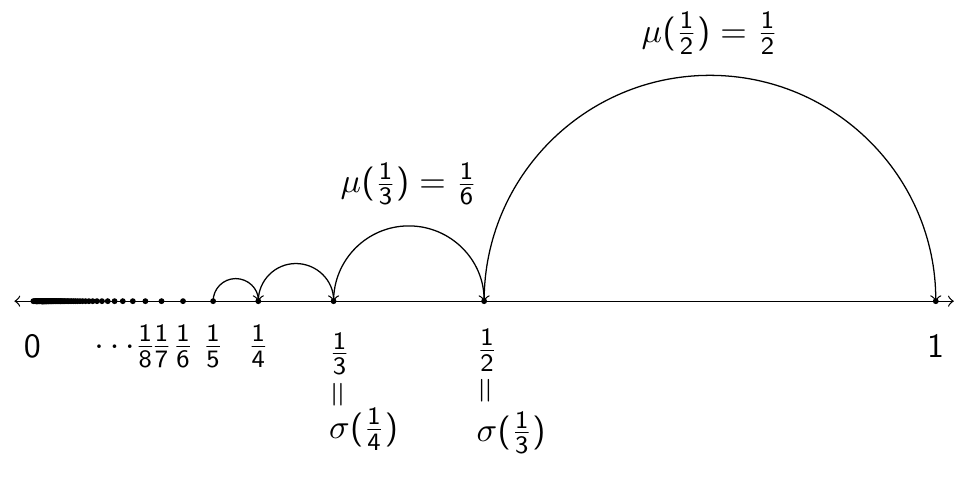Difference between revisions of "Closure of unit fractions"
From timescalewiki
| Line 33: | Line 33: | ||
| | | | ||
|} | |} | ||
| + | |||
| + | <center>{{:Time scales footer}}</center> | ||
Revision as of 01:23, 22 May 2015
The set $\overline{\left\{\dfrac{1}{n} \colon n \in \mathbb{Z}^+\right\}}=\left\{ 0,1,\dfrac{1}{2},\dfrac{1}{3},\ldots \right\}$, where the $\overline{\mathrm{overline}}$ denotes topological closure of this set in the usual topology on $\mathbb{R}$ is a time scale.
| Generic element $t\in \mathbb{T}$: | Either $t=0$ or for some $n \in \mathbb{Z}^+, t = \dfrac{1}{n}$ |
| Jump operator: | $\sigma(t) = \left\{ \begin{array}{ll} \dfrac{1-t}{t} &; t>1 \\ 0 &; t=0 \end{array} \right.$ |
| Graininess operator: | $\mu(t) = \left\{ \begin{array}{ll} \dfrac{1-t-t^2}{t} &; t>0 \\ 0 &; t=0 \end{array} \right.$ |
| $\Delta$-derivative: | $f^{\Delta}(t) = \left\{ \begin{array}{ll} \dfrac{t}{1-t} \left[ f \left(\dfrac{1-t}{t} \right)-f(t) \right] &; t>0 \\ \displaystyle\lim_{h \rightarrow 0} \dfrac{f(h)-f(0)}{h} &; t=0 \end{array} \right.$ |
| $\Delta$-integral: | |
| Exponential function: |
Examples of time scales |
||||||||
Real numbers |
Integers |
Multiples of integers |
Square integers |
Harmonic numbers |
Isolated points |
|||
nth root numbers |
Evenly spaced intervals |
Quantum, $q>1$ |
Quantum, $q<1$ |
Closure of unit fractions |
Cantor set |
|||
